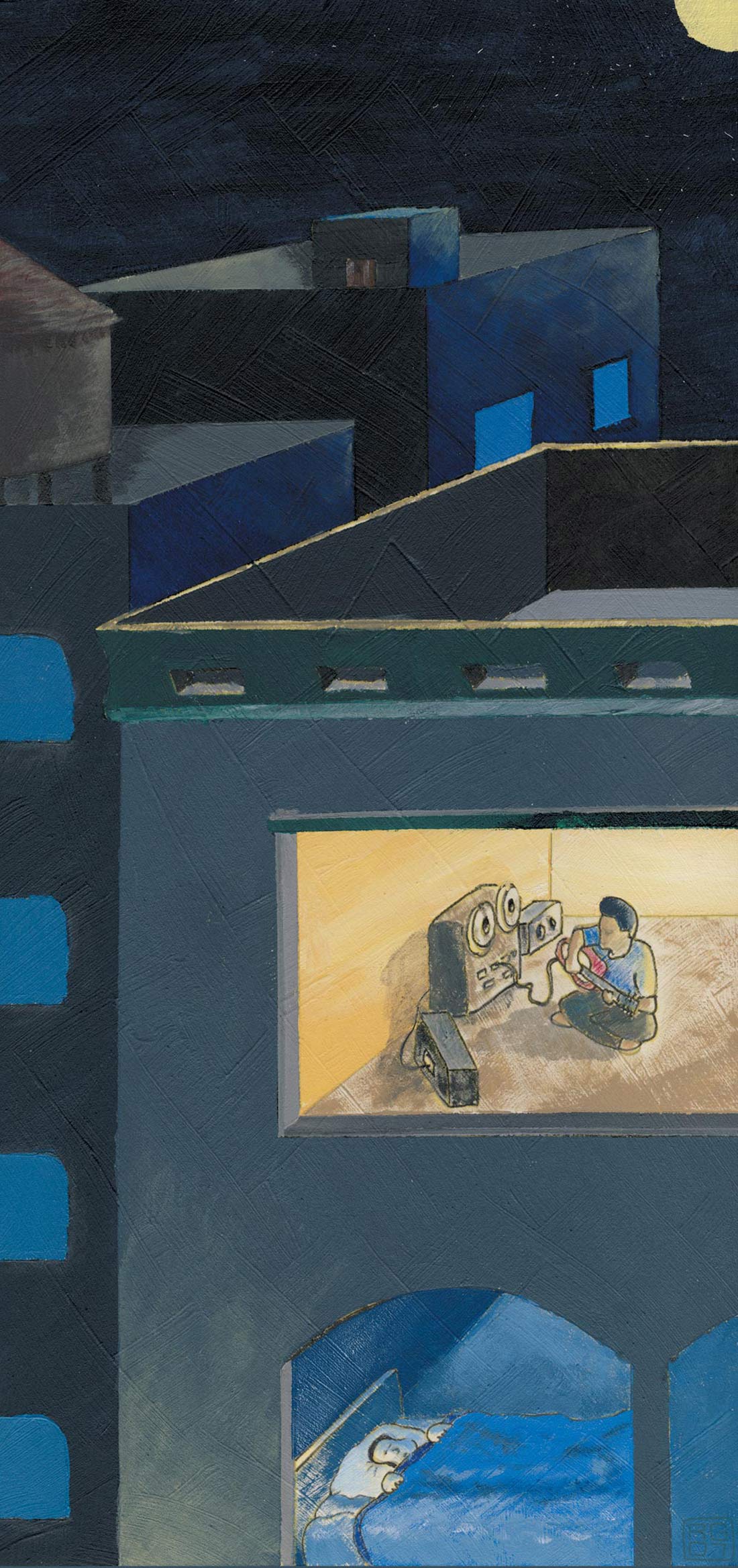For this review, I concerned myself with one question. Can three "blindfolded" listeners tell the difference between Mogami and VOVOX XLR cables?
Wow-yes. Test methodology is detailed at the end of this review, but in short, the participants' answers matched up across 8/10 tests. Although the participants felt a little baffled afterward, and said they were unsure of what they were hearing, their answers were very consistent. They described what they heard, what they liked better, and which was cable "A" and which was "B" from test to test. All three listeners used words like "darker, fuller, smoother" for the VOVOX cables; and "brighter" kept coming up for Mogami. Two of the listeners mostly liked VOVOX, and one of them mostly liked Mogami. It is interesting that descriptions matched for all listeners, but preferences did not, but three people obviously do not make a conclusive taste test. The two comparisons that each listener missed were when the cable didn't change or the sample didn't change, which is food for another discussion.
No sample was repeated in the tests (other than the mentioned deliberate repeat), so these observations were made over and above the subtle differences apparent in each performance. This is an important point, because at first I thought to keep things neutral, we'd play the same sample at line level out through the different cables. Then I thought that if the subtleties in a performance are enough to mask the difference a cable makes, then the cable is not making enough of a difference. In this case, the difference was still audible, and I think this is remarkable. While the difference was very subtle, the listeners were concentrating on only one source. The cumulative change in a mix may be more obvious. Finally, it's important to note that the listening was done in a project studio environment. This means the difference is really there, even for us not-rich-and-famous types, and in a high-dollar listening environment, the differences might be even more noticeable.
The feel of the VOVOX cable is extremely high-end. VOVOX have a great website with lots of interesting information about the wide variety of cable they make; check it out as their products are made like no others I know of. Most notably, the existence of an unshielded audio cable, the link direct S, defies all the audio folk wisdom I have learned, but it worked fine. This unshielded model is included with Brauner microphones-a big vote for going without a shield. Not to be underrated, VOVOX is also the easiest handling cable I've ever used; it rolls and unrolls very quickly and resists tangling very well.
The VOVOX literature does not included any measurements but rather a statement that measurements are misleading, and ears are all that matter. Agreed. Still, I couldn't resist asking my friends to run frequency plots on the Audio Precision analyzer. The shielded link protect S has slightly wider bandwidth than the Mogami, and the unshielded link direct S is slightly wider still. Bear in mind the measurements reached beyond 100 kHz, but they're interesting nonetheless.
In 22 years of audio geekery, this is the first time I've experienced-first hand-a cable making an audible difference in a blind test. No matter how subtle, this is amazing to me. I can easily recommend VOVOX to commercial facilities, because the build-quality alone makes it an easy and effective way to advertise that you care about every detail in the signal chain. It's a good bet that every customer would ask about it on sight. The average home studio would probably be better off spending money on other equipment considering the price. Still, it is tempting to get just one.
Here are the test details. The first set of five tests were successions of harmonically dense chords played on a Steinway Model B grand piano with the sustain pedal down. Brauner AE mics were set up in a 60 degree X/Y arrangement, with one upside-down above the other, about 1 ft off of the hip of the Steinway. VOVOX cables are measured metrically, so I used custom-made Mogami Neglex 2534 cables of the exact same length. Gold plated Neutrik connectors were used for Mogami and VOVOX. The manufacturer claims a greater dynamic range is preserved with VOVOX, so signals recorded with it will have louder peaks. Based on this assumption, I set levels with the VOVOX, and changed nothing when recording through the Mogami cable. I used a UA 2108 preamp set for clean gain and an Alesis HD24XR recorder at 96 kHz. Identical 1 ft Belden quad cables connected the two. Many samples of the same chord were recorded, and the five closest matches from each cable were paired. One "trick" pair was made with two different samples recorded through VOVOX. The second set of five tests were recordings of a large set of keys jangling. This was set up the same way, except the trick test paired the exact same sample recorded through Mogami. The recordings were edited and played back using Nuendo and an RME Fireface 800 through Focal Solo6 Be and JBL LSR28P monitors with LSR12P sub. The samples were left untouched; no normalization or other post-processing occurred. Participants were allowed to listen as many times as they wanted. Thanks to Casey and Gary Schultheis, Flip Osman, Arfel Hernandez, James Ciglar, and Ned Harrington for their help, and to UA for letting us use the AP analyzer. (link direct S 6.0904 24.6 ft, $151 MSRP; link protect S 6.1004 24.6 ft, $211; www.vovox.com)
Tape Op is a bi-monthly magazine devoted to the art of record making.




_disp_horizontal_bw.jpg)